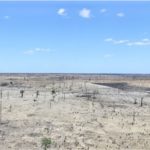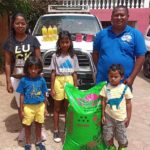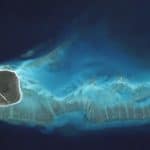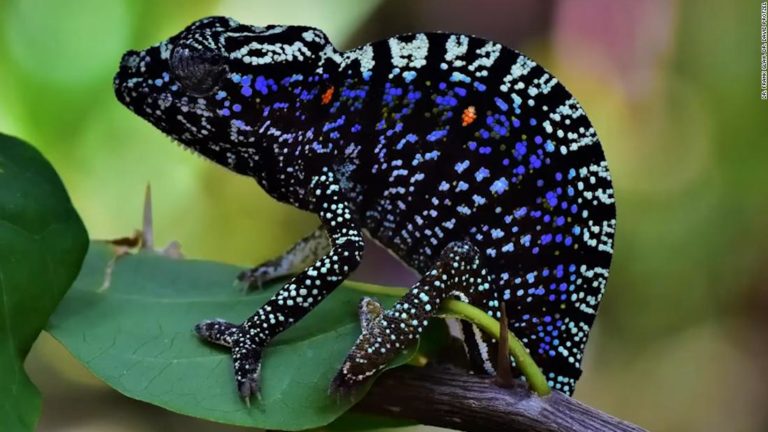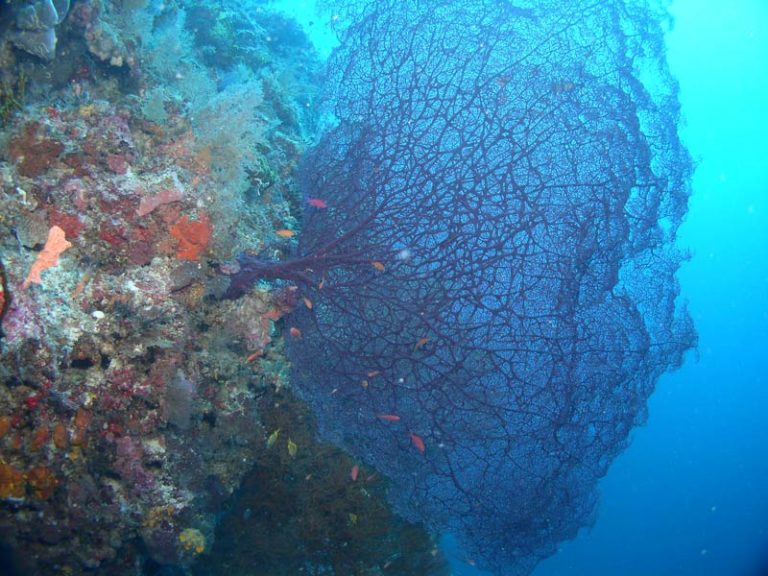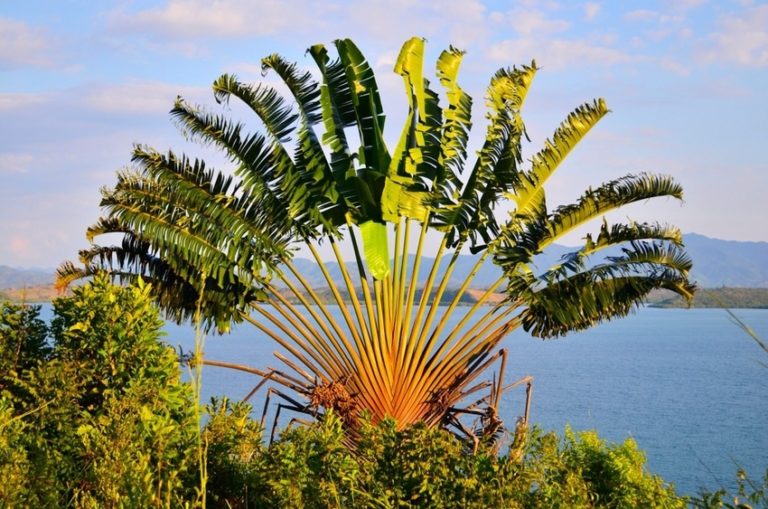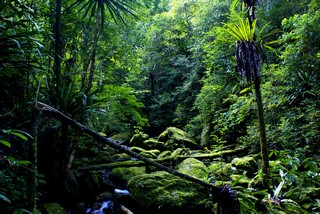Amphibians in Madagascar
Part 2 -Microhylidae and Ranidae
The peculiarity of the amphibians in Madagascar is that almost all of the approximately 200 frog species are endemic there.
According to the estimates of two specialists of the amphibian world of Madagascar, Frank Glaw and Miguel VencesHowever, the affiliation of more than 150 of the frogs is not yet clear.
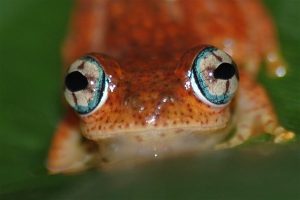
These two species are among the largest frogs in Madagascar.
Among the most beautiful and colorful frogs of Madagascar, besides the two already mentioned species of the golden Mantellas also the Microhylidae of the genus Scaphiophryne.
Particularly attractive is the type Scaphiophryne gottlebei, which is located in the region of the Isalo National Parks lives.
Unfortunately, because of its bright color, it is threatened by the amphibian trade.
Therefore, the beauty of this species of frogs is fatal for them.
The environmental protection organization Pro Wildlife draws attention to the danger of liquidation of Madagascar's biodiversity.
The legal ban on trade in endangered amphibian and reptile species was discussed in the Species Survival Commission of the Washington Convention on International Trade in Endangered Species as early as 2009.
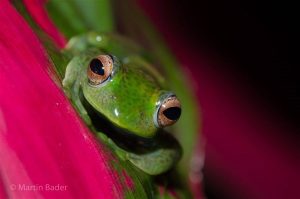
Native described species belong to four different families, two of which I have described in the frogs -. Amphibians in Madagascar-Part 1:
Hyperoliidae (11 species), Mantellidae (212 species)
In this Amphibians in Madagascar-Part 2 be
Microhylidae (86 species) and Ranidae (1 species).
as well as two other species described: the ranid Frog Hoplobatrachus tigrinus and the Toad Duttaphrynus melanostictus.
The Microhylidae
The Microhylidae, commonly known as close-meshed frogs, are a geographically widespread family of frogs. The 683 species belong to 63 genera and 11 subfamilies worldwide, representing the largest number of genera of any frog family.
 Development
Development
The most recent common ancestor of the Microhylidae and their closest ranoid relatives are estimated to have lived in Gondwana 116 million years ago.
Description
As the name implies, microhylids are mostly small frogs. Many species are less than 1.5 cm long, although some species are up to 9 cm.
They can be arboreal or terrestrial, and some even live near water. Ground dwellers are often found under leaf litter in forests, occasionally venturing out at night to hunt.
The two main forms for the microhylids are wide bodies and narrow mouths and normal frog proportions.
Those with narrow mouths generally eat termites and ants, and the others have a diet typical of most frogs.
The laying habits of frogs are very different.
Almost all native species are endemic, with the exception of Ptychadena mascareniensis. 85 species are threatened with extinction, nine of which are classified as critically endangered by the IUCN.
Their numbers are largely affected by severe habitat changes due to deforestation and expansion of rice fields and villages, and to a lesser extent by illegal international trade.
Anilany helenae
Anilany helenae is a species of frog from the mikroyhlidae Subfamily Cophylinae. It is the only species in the monotypic genus Anilany and is endemic to central Madagascar.
 Taxonomy
Taxonomy
This species was originally discovered in 2000 by Denis Vallan as a member of the Genus Stumpffia described.
In 2016, it was included by Peloso et al. in the Genus Rhombophryne transferred when they synonymized Stumpffia with that genus, but was then transferred by Scherz on the basis of their genetic relationship to the newly established Genus Anilany postponed
Habitat and ecology
Its natural habitat is subtropical or tropical moist montane forests. It is threatened by habitat loss.
It now occurs in a few strips of fragmented habitat near Ambohitantely in Madagascar.
Anodonthyla jeanbai
Anodonthyla jeanbai is an arboreal frog species in the family Microhylidae. It is highly polychromatic and has an extremely isolated phylogenetic position with no clear relationships to other members of the Genus Anodonthyla shows.
It is only found in a small higher altitude area in Madagascar.
 Description
Description
Specimens in life, in dorsolateral and ventral views, all from Andohahela National Park.
Jeanbai can be distinguished from all other Anodonthyla species can be distinguished in numerous ways, including a yellowish coloration on the ventral surfaces that extends completely across the venter in some specimens.
Another distinction is the tympanum, which is often not as clearly visible as in other species.
In this species, the back and the rear part of the head is almost uniformly colored brown. The front part of the head has a slightly lighter brown coloration.
A narrow midline runs down the back from the tip of the snout to the cloaca. The groin region contains two black spots.

The cloacal region has a blackish color, while the chest, ventral parts of the limbs and throat have a dirty yellowish color.
The belly of this species has a similar color, but is more grayish.
A.jeanbai is an extremely polychromatic species. In life, the dorsum is light brown. The dorsal surfaces of both arms and legs are light reddish-brown in color and all have some indistinct, irregularly shaped, darker markings.
Distribution
Views of the palms of the male specimen showing details of the first finger and prepollex.
The species was found at only one surveyed site at relatively high elevations in the Andohahela National Park found at the southern end of Madagascar in the Toliara Province lies.
Habitat
This species is found at higher elevations, in forests with a high density of bamboo. It is seen at night, typically 1 to 2 meters high on bamboo stems.
Etymology
This species is named after the Malagasy Herpetologist Jean Baptiste (Jean-Ba) Ramanamanjato named. He provided the logistical information that was a crucial part of the expedition to the type locality located at higher elevations, an area of the Andohahela National Parks, were.
Anodonthyla nigrigularis
Anodonthyla nigrigularis is a species of frog in the family Microhylidae. It is endemic to Madagascar.
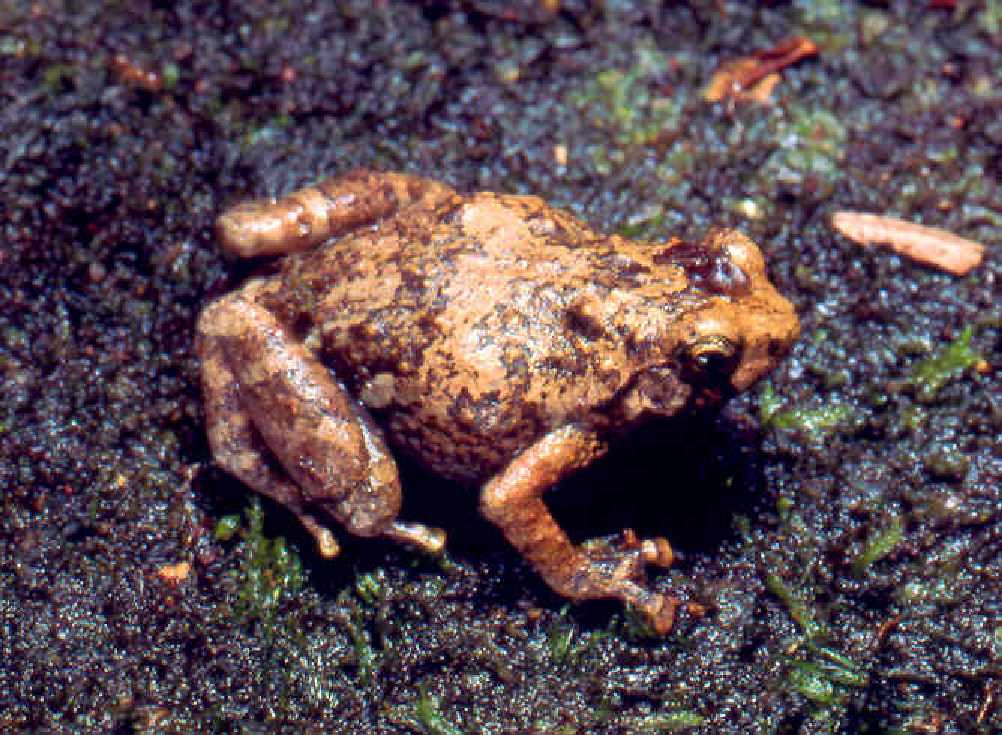
It is threatened by habitat loss due to agriculture, logging, charcoal production, spread of non-native eucalyptus trees, grazing livestock, and human settlement.
The exact population is not known, but it appears to be in the well-managed Andohahela National Park to be abundant and is in the Ambohitantely Reserve, that is not well managed is less common.
Not much more is known about this species.
Cophyla occultans
Cophyla occultans is a species of frog in the family Microhylidae
She comes on Nosy Be, its type locality, and the adjacent mainland in the Northeast Madagascar including Ambolokopatrika, Anjanaharibe Sud, Manantenina, Marojejy, Sambava and Voloina.
Cophyla occultans is an arboreal species that lives in rainforests. It can also be found in Coffee plantations and occur in bamboo cultivation where tree holes and bamboo are available.
Dyscophus antongilii
Dyscophus antongilii, the Madagascar tomato frog, is a species of frog in the Microhylidae family.
Females are much larger than males, reaching up to 10.5 cm and 230 g in weight (6.5 cm and 41 g for males).

Females are much larger than males and have lighter shades of red or orange on their backs, with a pale underside.
Some individuals also have black spots on the throat.
It is believed that the bright colors of the tomato frog serve as a warning to potential predators that these frogs are poisonous.
A white substance secreted by the skin acts as an adhesive to deter predators (such as variegated snakes) and can cause an allergic reaction in humans.
Habitat and distribution
Endemic to Madagascar, tomato frogs are found in the northeast of the island around the Antongil Bay (from which they have received their specific name antongilii),and south to Andevoranto.
However, the exact distribution of this species is unclear, as it is closely related to the D. guineti is confused.
The tomato frog breeds in shallow pools, swamps, and areas with slow-moving water.
These frogs are found from sea level to altitudes around 200 m.
Its natural habitats are subtropical or tropical moist lowland forests, rivers, swamps, freshwater marshes, intermittent freshwater marshes, cropland, plantations, rural gardens, urban areas, severely degraded former forests, ponds, and canals and ditches.
 Life cycle and ecology
Life cycle and ecology
Tomato frogs breed in February to March after heavy rains; the sounds of males calling for females to attract them can be heard around small bodies of water in the dark Malagasy night.
After copulation, females lay a clutch of 1,000 to 1,500 eggs on the water surface.
Tadpoles hatch from these small black and white eggs about 36 hours later; they are only about six millimeters long and feed by filter feeding.
Tadpoles metamorphose into yellow juveniles, and this stage is completed about 45 days after egg laying.
When hunting potential prey, adult tomato frogs feed on small invertebrates such as beetles, mosquitoes, and flies.
When these frogs are threatened, they can puff up and give the appearance of being larger.
 Threats and protection
Threats and protection
The tomato frog is classified as Near Threatened (NT) on the IUCN Red List and is listed in Appendix I of CITES.
Tomato frog numbers have declined as a result of habitat degradation and pollution, as well as overcollection of these colorful amphibians for the pet trade.
Gathering activity and associated population declines were concentrated primarily near the Maroantsetra City.
In response to this pressure, the tomato frog was quickly listed in Appendix I of the Convention on International Trade in Endangered Species (CITES).
The Baltimore Zoo in the United States has conducted research on captive breeding methods for the tomato frog to benefit the currently small and genetically disadvantaged captive population that exists in this country .
A consortium of U.S. zoos that make up the Madagascar Fauna Group (MFG) has set up an exhibit at Parc Zoologique Ivoloina, Madagascar, to introduce local people to this attractive member of their natural heritage.
Very little is known about the tomato frog, and further research on its distribution, behavior, and potential threats is urgently needed before effective conservation measures can be taken.
Platypelis tsaratananaensis
Platypelis tsaratananaensis is a species of frog in the family Microhylidae. The amphibian is endemic to northern Madagascar.
 Distribution
Distribution
The natural habitat of Platypelis tsaratananaensis is subtropical or tropical moist montane forests.
They inhabit high montane rainforests and bamboo groves and are not likely to occur outside of mature forests and are probably restricted to elevations above 1,100 meters.
It is found almost exclusively on bamboo and may be affected by the presence of the Daubentonia madagascariensis (nocturnal lemur) for the creation of holes in the bamboo benefit.
It breeds in bamboo stems by larval development.
Nature Conservation
It is threatened by habitat loss due to subsistence agriculture, logging, charcoal production, spread of invasive eucalyptus trees, livestock grazing, and expanding human settlements.
Plethodontohyla alluaudi
Plethodontohyla alluaudi is a frog belonging to the Madagascar-endemic subfamily Cophylinae of the family Microhylidae. It is endemic to southeastern Madagascar.
It is a terrestrial and fossil frog found in rainforest, including coastal forest.
Although locally abundant, it is difficult to find.
 Taxonomy
Taxonomy
The species was originally described under the name Dyscophus alluaudi by Mocquard 1901, originally described from the locality 'Fort Dauphin' - which probably refers to the general area around Tôlanaro rather than the town itself.
It was transferred to the genus Plethodontohyla in 1926, where it remained until transferred to Mantipus by Guibé in 1974, but returned to Plethodontohyla in 1978.
The taxon Plethodontohyla laevis from further north on the east coast of Madagascar was synonymized with the species P. alluaudi in 1991.
Blommers castles showed this species one specimen from Mandraka in eastern Madagascar, and subsequent authors interpreted specimens from the Andasibe area as also belonging to this species.
Plethodontohyla alluaudi is a frog belonging to the Madagascar-endemic subfamily Cophylinae of the family Microhylidae. It is found in the Southeast Madagascar endemic. It is a terrestrial and fossil frog found in rainforest, including coastal forest. Although locally abundant, it is difficult to find.
Rhombophryne coudreaui
Rhombophryne coudreaui is a species of frog in the family Microhylidae. It is endemic to the northeast of Madagascar.
The specific name Coudreaui honors Jean Coudreau, a colonial forest administrator in Madagascar, who collected the holotype.
For him the common names Coudreau's frog and Betampona digging frog coined.
 Description
Description
Females can reach up to 28 mm in length.
The overall appearance is stocky with short legs.
The muzzle is short.
The tympanum is indistinct and measures about 3/4 of the eye diameter. The fingers and toes show traces of webbing. The skin on the back is granular.
The back is light brown. It resembles the Rhombophryne testudo, but the barbels on the lower lip of the latter are missing.
Habitat and nature conservation
Rhombophryne coudreaui occurs in rainforests, including coastal rainforests, at elevations of 200-1,000 m above sea level.
It is a fossorial and terrestrial species. It is threatened by habitat loss and degradation, especially in coastal rainforests.
It comes in the Betampona Reserve and in the Marojejy National Park before.
Rhombophryne minuta
Rhombophryne minuta is a species of frog in the family Microhylidae. It is endemic to northern Madagascar.
It has been combined with other species such as Rhombophryne mangabensis mixed; it is certainly only from the Marojejy National Park known.
 Description
Description
As the specific name minuta suggests, Rhombophryne minuta is a small species: adult males are about 16-17 mm and females about 22 mm long. The tympanic membrane is indistinct. The dorsal skin is smooth to slightly granular.
The coloration is quite variable; the dorsum is uniformly brown or with dark reticulations and yellowish spots. The flanks often bear small white spots.
A largely yellowish specimen with a broad yellowish central stripe bordered by a dark line is also known. The venter has distinct or indistinct dark reticulations.
Habitat and nature conservation
Rhombophryne minuta occur in lowland and montane rainforest at an elevation of about 1,570 m above sea level.
It is a fossorial and terrestrial species. Its forest habitat is threatened by subsistence agriculture, logging, charcoal production, spread of invasive species (eucalyptus), grazing livestock, and expanding human settlements.
Illegal logging is also common in the Marojejy National Park Occurred
Rhombophryne serratopalpebrosa
Rhombophryne serratopalpebrosa is a species of frog in the Malagasy endemic microhylid subfamily Cophylinae
Genetic evidence showed that it is a complex species that needs resolution.
This work has made significant progress, and five related species from this complex have been described between 2014 and 2017.
It is threatened by the loss of its habitat.
 Range of Rhombophryne serratopalpebrosa.
Range of Rhombophryne serratopalpebrosa.
Rhombophryne serratopalpebrosa is found in the Marojejy Massif endemic in the north of Madagascar. At present it is known with certainty only from the holotype specimen.
Its type location is at high altitude on the Marojejy massif.
Records from outside the Marojejy National Parks may refer to other species, and so far this species has only been confirmed from this one location.
Description
The holotype of Rhombophryne serratopalpebrosa is about 29 mm long.
Its fingers and toes are not woven, and its dorsal skin is granular; it has four spines over each eye, the rearmost of which are indistinct.
Rhombophryne vaventy
Rhombophryne vaventy is a large species of frog of the microhylid subfamily Cophylinae, endemic to Madagascar. It is one of the largest members of its genus.
Range and distribution
Rhombophryne vaventy is endemic to the Marojejy Massif in northern Madagascar, where it was originally described from two individuals captured at high altitude.
 Description
Description
Rhombophryne vaventy measure up to 52 mm
In life, the dorsal skin is highly textured. It has no tissue between fingers and toes and has very long legs.
It has four spines of unequal size above each eye, which is characteristic of its species group.
Habitat and ecology
Rhombophryne vaventy is found in montane rainforest at high elevation (~1,300 m above sea level) on the Marojejy Massif.
Like most Rhombophryne species, R. vaventy is a terrestrial or possibly semi-fossorial frog.
It is a generalist predator, and is known to include relatively large arthrosphaerid millipedes of the genus Zoosphaerium among its diet
Nothing is currently known about its breeding or calling behavior.
Taxonomy
Rhombophryne vaventy was confused with R. serratopalpebrosa until the taxonomy of the R. serratopalpebrosa species complex began to resolve.
It differs from R. serratopalpebrosa in size, eye spines, skin texture, and numerous other characteristics.
The ongoing breakup of this complex has produced several new species, including R. ornata and R. tany.
Scaphiophryne boribory
Scaphiophryne boribory is a species of frog in the family Microhylidae. It is endemic to eastern Madagascar and known only from the area of its type locality near Fierenana.
Etymology
The specific name Boribory is a Malagasy word meaning "round", referring to the stocky and rounded body shape of the species.
 Description
Description
Adult males measure 49-60 mm and females 47-59 mm in length.
The body is strong. The head is broader than long, but less broad than the body. The tympanum is not visible and the supratympanic fold is rudimentary. The arms are moderately slender, while the hind limbs are short and rather stocky.
The phalanges are strongly pronounced, while the phalanges on the toes are only slightly pronounced. The skin is smooth in the preserved specimens (except on the throat). The skin appears "oversized", with loose and saccular "fit".
The dorsal color is vivid green, with prominent brown markings with black edges. The finger and toe discs are distinctly reddish. The belly is black with white spots.
Scaphiophryne boribory resembles Scaphiophryne marmorata and Scaphiophryne spinosa, but is larger, lacks tubercles in preserved specimens, and has reddish discs on fingers and toes.
 Habitat and nature conservation
Habitat and nature conservation
Its natural habitats are flooded forest areas on sandy soil. Presumably it breeds in swamps.
The altitude of its habitat has been variously reported as about 950 m or 1,000-1,200 m above sea level.
It is threatened by loss of its forest habitat caused by subsistence agriculture, livestock grazing, logging and charcoal, spread of invasive eucalyptus, and expansion of human settlements.
Excessive collection for the international pet trade could also affect it.
Scaphiophryne gottlebei
Scaphiophryne gottlebei, commonly known as. madagascar rainbow frog, Rainbow litter frog, Red rain frog or Gottlebe's narrow mouth frog, is one of the most highly decorated frogs from Madagascar.
The main threats to this endangered species are habitat loss and capture for the (now illegal) pet trade.
 Description
Description
The Malagasy Rainbow Frog is a small, roundish, brightly colored species with a distinctive white, orange-red, green, and black pattern on its back, with each area clearly delineated.
The skin on the back is very smooth, but that of the gray belly is a little rough. The muzzle is rounded, the eyes are prominent, but the tympani are inconspicuous. The limbs are short and strong, the fingers have large tips and the hind feet are webbed.
The Malagasy rainbow frog is adapted for both burrowing and climbing. It has horny tubercles on the underside of its hind feet to help it burrow, and claws on its front feet to hold onto vertical canyon walls.
With a length of 2.6 to 4 cm from snout to throat, females are larger on average and reach a larger maximum size than males, which measure 2 to 3.4 cm

This frog often spends time in holes or rock crevices
The Malagasy rainbow frog is endemic to the Isalo Massif at an altitude of 700-1,000 m in the central part of southern Madagascar, including the Isalo National Parks and the areas south of it.
Its primary habitat is narrow canyons where conditions tend to be cool for the tropics, relatively dark (resulting in little or no vegetation), and very wet.
The typical temperature in its habitat is 19-22 °C but overall it varies between about 13 and 35 °C
It shares its range with another colorful and endangered frog, the Blue-footed Mantella (Mantella expectata), which occurs in the same habitat but prefers more open, sun-exposed areas.

Although rare outside of its primary canyon habitat, it is also found in open rocky areas, usually in dry forests.
Behavior
The Malagasy Rainbow Frog is an explosive breeder (meaning that the breeding season is short and starts suddenly), breeding in groups in November-December, shortly after the first heavy rains in the early rainy season.
A group often consists of several dozen individuals and usually more males than females. The males call from rock walls or from the surface of temporary pools, and in these are laid the eggs, which hatch into tadpoles after only about three days.

In the wild they are detritivores and filter feeders, although in captivity they were raised on fish food from Gosner stage 25 until nearly metamorphosis.
They have an unusual habit of spending the day with their heads submerged in bottom sediment, feeding on detritus, and their tails sticking out at an angle. At night, the tadpoles swim around, apparently filtering food particles from the open water.
Many tadpoles are washed away by torrents during the rainy season and may complete their metamorphosis elsewhere.
Recently metamorphosed juvenile frogs are about one-half to one-third the size of adult frogs, but otherwise similar.
In addition to inactive dispersal of tadpoles by water currents, adults may actively disperse, especially in cold weather.
The species is quite short-lived, typically reaching an age of only 2 years.
Conservation status
The IUCN lists the Malagasy Rainbow Frog as "Critically Endangered"; previously (from 2004 to 2008) it was "Endangered" but this was reduced when it was found to be more widespread than previously thought and locally common.
Although widespread in some areas, it has a limited range and its population is believed to be declining.
The major threats are habitat loss and overcollection for the pet trade. The main threats to habitat are logging, fire, overgrazing by livestock, mining, and possibly disturbance by tourists.
As recently as the 2000s (decade), thousands were caught each year for the pet trade.
With the inclusion in CITES Appendix II, an export quota was introduced. By 2014, it had been reduced to 0 (zero), making it illegal to export wild-caught animals.
There is evidence that the snake Leioheterodon modestus may be an important natural predator of this frog.
Scaphiophryne marmorata
Scaphiophryne marmorata is a species of frog in the family Microhylidae, commonly known as the green burrowing frog and the marbled rain frog is known.
It is endemic to Madagascar. It is classified as "vulnerable" by the IUCN because it is threatened by habitat loss.
 Taxonomy
Taxonomy
In 2003, a revision of the Scaphiophryne marmorata complex was undertaken, as a result of which Scaphiophryne spinosa was removed from synonymy with Scaphiophryne marmorata and a new species, Scaphiophryne boribory, was described.
Description
The female green burrowing frog grows to about 40 millimeters long, the male is smaller at 30 millimeters.
It has an almost spherical shape with a small, flattened head, a short muzzle, protruding eyes and well-muscled limbs.
The skin of the back is mostly smooth, but on the upper back there are two symmetrical pairs of thorny humps.
The toes on both the forelimbs and hind limbs are elongated, which helps the frog climb around in trees and shrubs. At the end of the fingers are extended discs, which is a characteristic feature of this species.
The hind limbs are short with bony flanges on the heels to facilitate digging. The color is a light green, generously spotted with darker green and black spots.
In the western part of their range, the color is more olive green. The underside is often white marbled.
 Distribution and habitat
Distribution and habitat
The green burrowing frog is found in the rainforests of eastern Madagascar and in the drier western half of the island. It is found up to 1,000 meters above sea level.
Biology
The green burrowing frog spends much of its time buried in dead leaves on the forest floor, but when it reappears, it often climbs into the branches of bushes and small trees to catch the insects on which it feeds.
Little is known about the breeding habits of this frog, but it is thought to be an "explosive" breeder, with all the frogs in an area coming together at the same time to mate and spawn in temporary pools at the beginning of the rainy season.
The tadpoles are likely to grow quickly so that they are mature enough to live independently when the pools dry up.
Booth
The green burrowing frog is listed as "vulnerable" on the IUCN Red List of Threatened Species.
This is because, although it is locally abundant, its range in Madagascar is small and fragmented, it is threatened by habitat loss, and populations appear to be in decline.
A small number of individuals are collected for the pet trade, but the possibility of captive breeding is being explored, which would alleviate this pressure.
This frog has a safe environment in the various national parks where it can be found.
The genus Ranidae
The real frogs, the family Ranidae, have the widest distribution of all frog families. They are found in most parts of the world and are found on all continents except Antarctica.
The true frogs are found in North America, northern South America, Europe, Africa (including Madagascar), and Asia.
Typically, true frogs are smooth and moist-skinned, with large, powerful legs and extended webbed feet.
Many of the true frogs are aquatic or live near water.
Most species lay their eggs in water and go through a tadpole stage. However, as with most families of frogs, there is great variation in habitat within the family.
Hoplobatrachus tigerinus
Hoplobatrachus tigerinus, the Bullfrog from the Indus Valley or Indian Bullfrog, vernacular name Asian Bullfrog, Asian Bullfrog, is a large species of frog found in mainland Myanmar, Bangladesh, India, Pakistan, Afghanistan and Nepal.
It was introduced to Madagascar and the Andaman Islands in India, where it is now a widespread invasive species.
 Description
Description
They are found in India, Bangladesh, Pakistan, Nepal, Myanmar, Afghanistan and Sri Lanka. They are also found in the Maldives and Madagascar.
They prefer freshwater wetlands and aquatic habitats.
Generally, they avoid coastal and forested areas.
Rana tigrina is mostly solitary and nocturnal. They inhabit holes and bushes near permanent water sources.
The frog does not stay in the water for long; it spends most of its time hiding and feeding in the surrounding vegetation.
It feeds on various species of insects, invertebrates, mice, shrews, young frogs, earthworms, roundworms, juvenile snakes and small birds.
Vomerine teeth in two strongly oblique series starting from inner anterior angle of choanae; mandible with two not very distinct bony processes anteriorly.
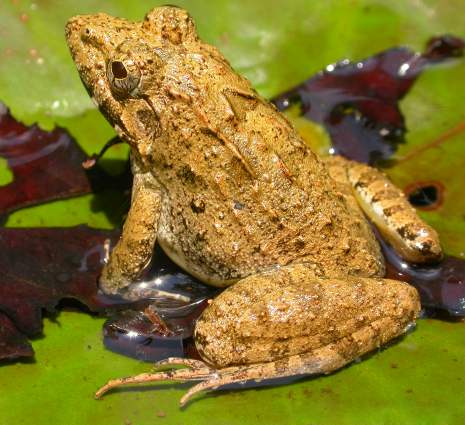
Fingers rather short, the first extending beyond the second; toes moderate, blunt, almost completely covered with webs; a strongly developed membranous margin along the fifth toe; subarticular tubercle moderate; inner metatarsal tubercle very variable, small and blunt, strongly compressed, crescentic, shovel-shaped; no outer tubercle, one tarsal fold.
Tibiotarsal joint extending to ear, eye, or slightly beyond. Skin of the back with longitudinal folds; a strong fold above the tympanum.
Green or olive above, with dark spots; often a pale spine line. Male with two subgular vowel sacs, externally conspicuous by skin folds on sides of throat; these regions generally blackish.
This large frog can reach a snout to vent length of 170 mm.
This species is classified as Least Concern in the IUCN Red List.
Ptychadena mascareniensis
The Mascarene grass frog (Ptychadena mascareniensis), or Mascarene grass frog, is a species of frog in the family Ptychadenidae. It is found in sub-Saharan Africa, Madagascar and Mauritius.
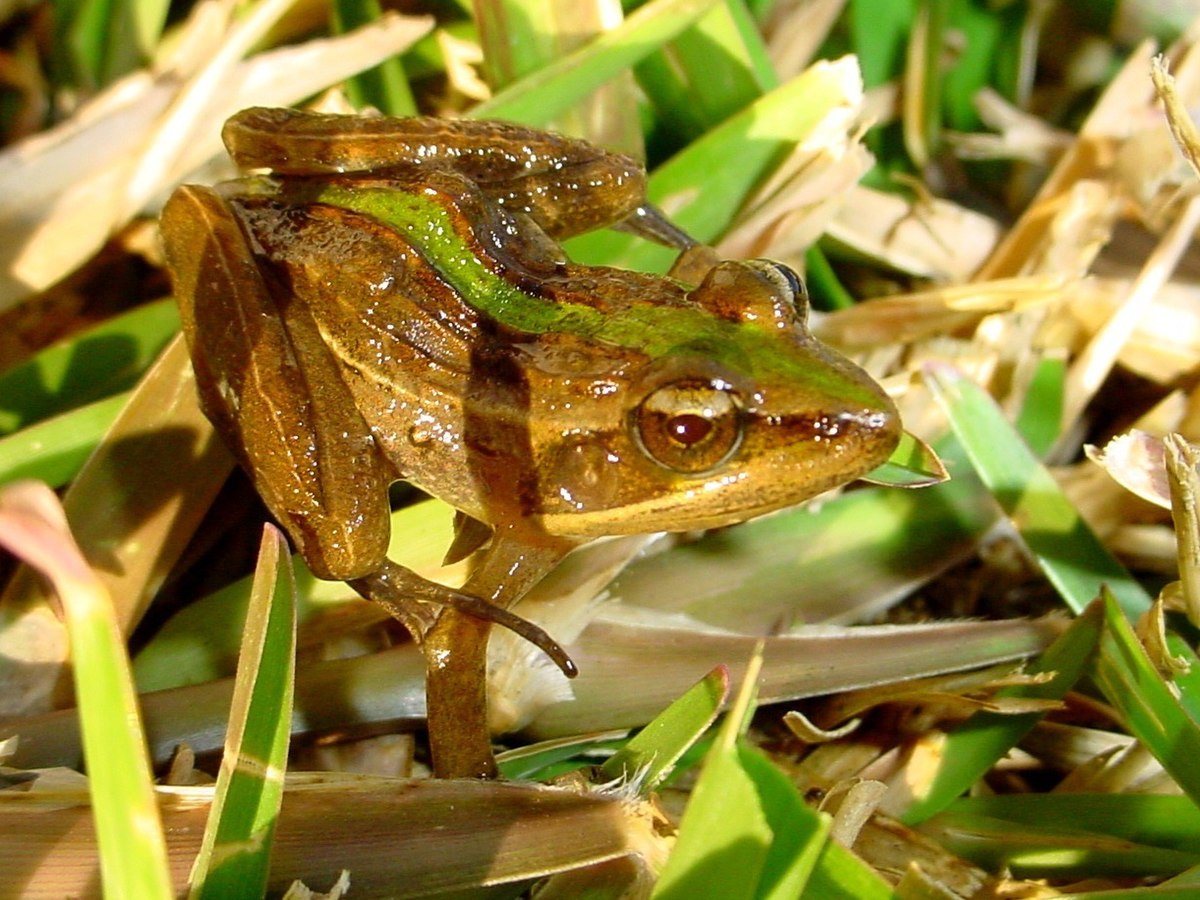
Dry savanna, wet savanna, subtropical or tropical dry scrub, subtropical or tropical wet scrub, Mediterranean-type shrubby vegetation, subtropical or tropical dry lowland grassland, subtropical or tropical seasonally wet or flooded lowland grassland, subtropical or tropical upland grassland.
Rivers, isolated streams, shrub-dominated wetlands, marshes, freshwater lakes, isolated freshwater lakes, freshwater marshes, isolated freshwater swamps, sandy shores, cropland, pastureland, plantations, rural gardens, urban areas, severely degraded former forests, reservoirs, ponds, aquaculture ponds, irrigated lands, seasonally flooded agricultural lands, and canals and ditches.
Amphibians from Madagascar Part 1 - Mantella and Boophis

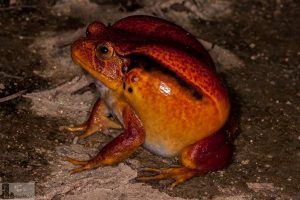
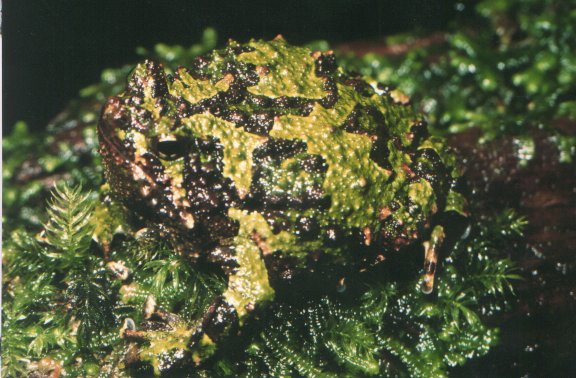 Development
Development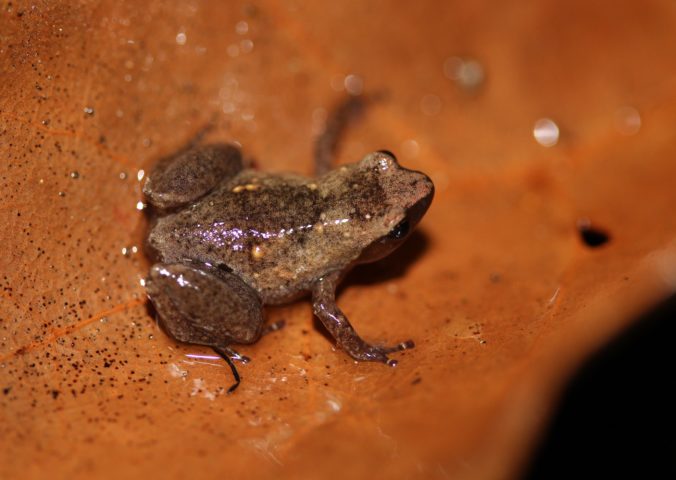 Taxonomy
Taxonomy Description
Description Life cycle and ecology
Life cycle and ecology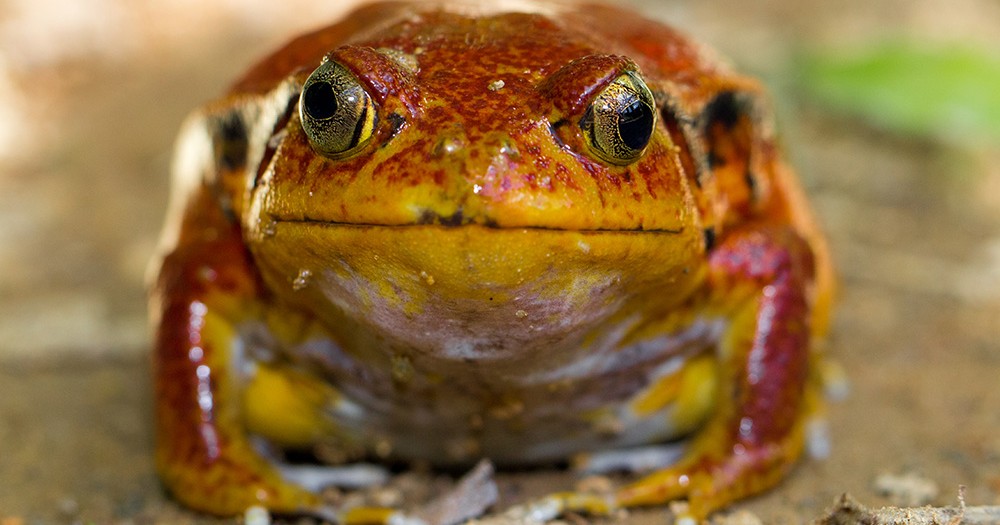 Threats and protection
Threats and protection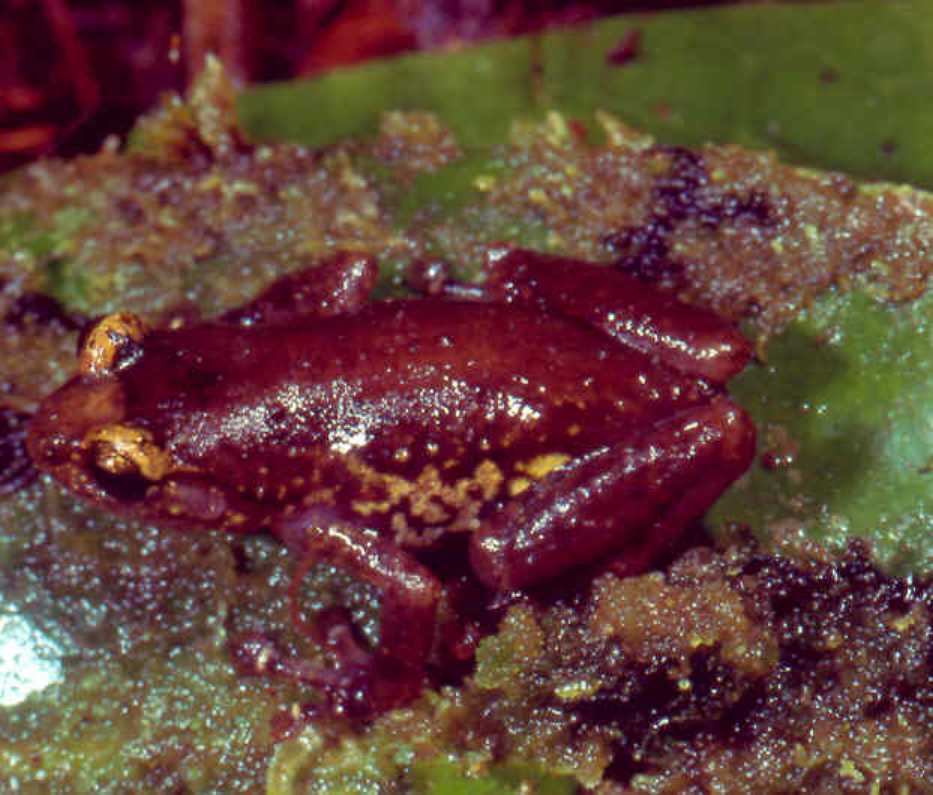 Distribution
Distribution Taxonomy
Taxonomy Description
Description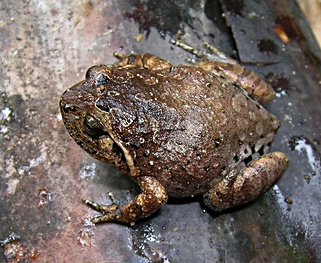 Description
Description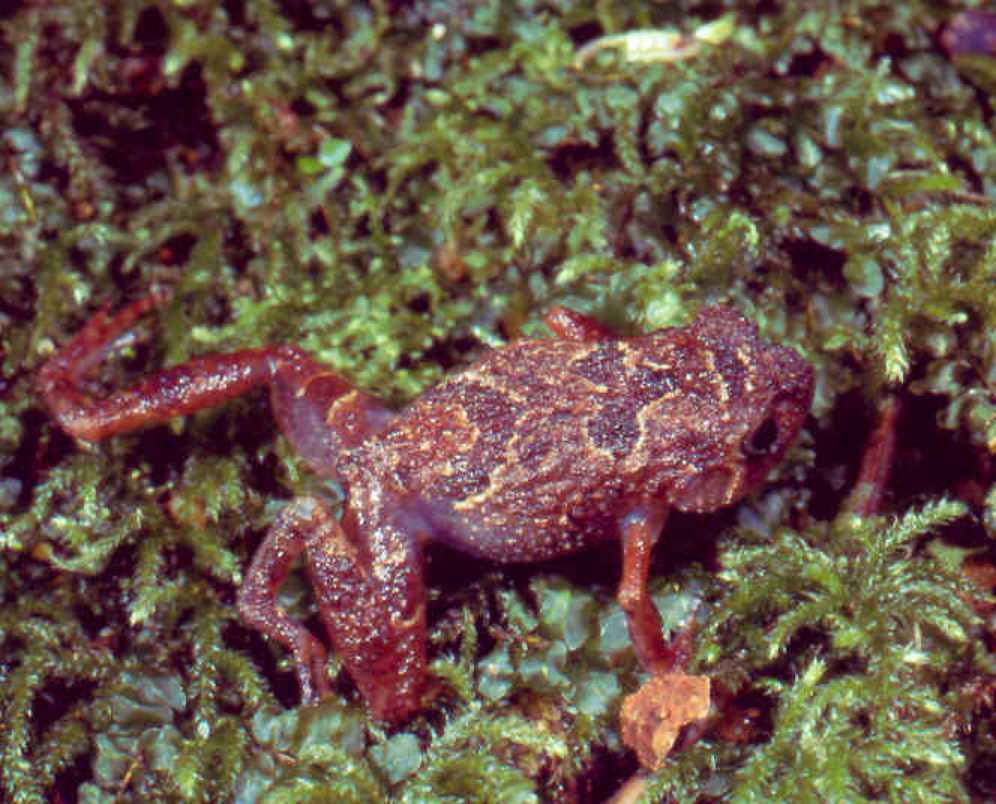 Range of Rhombophryne serratopalpebrosa.
Range of Rhombophryne serratopalpebrosa. Description
Description Description
Description Habitat and nature conservation
Habitat and nature conservation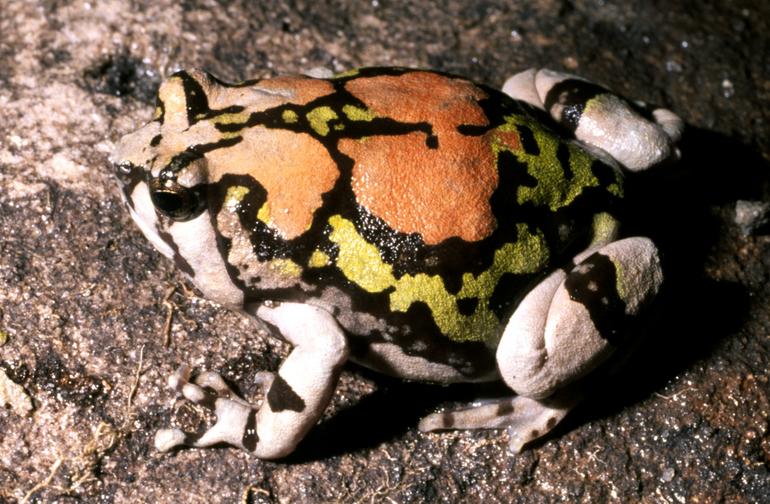 Description
Description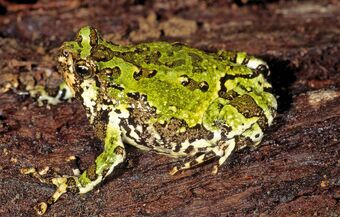 Taxonomy
Taxonomy Distribution and habitat
Distribution and habitat Description
Description

